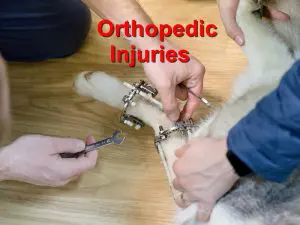Cushing’s disease in dogs is usually characterized by the overproduction of cortisol, the stress hormone. Cortisol, which is secreted by the adrenal glands, also plays a role in protein, fat, and carbohydrate metabolism in poodles. These glands are located slightly above the kidneys and, when they malfunction, they can trigger Cushing’s disease. Speaking of which, here are some of the symptoms to look out for.
1. Increased Urination and Thirst
A heightened need for water coupled with an increased frequency and volume of urination is often the first symptoms of cushing’s disease that most dog owners will notice. You’ll start noticing that your dog empties her water bowl more often than they used to and begin having notable urinary accidents despite being well potty trained. At this juncture, it is best if you called your vet ASAP.
2. Increased Appetite
Another common sign of Cushing’s disease is an abrupt and unexplained increased appetite, especially if your dog is not known to eat much. Canines that were previously satisfied with eating kibble for a whole day may start eating an entire serving immediately or begin attempting to access leftovers from the trashcan or countertops. But since we are accustomed to associate poor appetite with malady and a hearty appetite with healthiness, most pet parents will rarely see a cause for alarm in this.
3. Hysterical Panting
While dogs may pant for a number of reasons, such as cooling themselves, out of pain or anxiety, increased and hysterical panting is one of the key signs of Cushing’s disease. The reason for this can be traced back to the fact that Cushing’s disease is known to cause increased fatty tissue deposits in the dog’s chest and abdominal cavities. Besides, the enlarged liver restricts the diaphragm from expanding or contracting with ease. This results in difficulty in breathing and the poor animal has to pant excessively to make up for the deficit.
4. Having an Unusual Pot-bellied Appearance
The elevated levels of adrenal cortisol can cause progressive and systemic muscle weakness. And this can manifest itself as exaggerated lethargy and fatigue. And as the abdominal muscles lose their function, the dog will tend to develop an abnormal looking protruding belly. This is then worsened by an enlarged liver and the unhealthy redistribution of fatty tissue around the chest and abdominal cavities.
In Closing
Ensure that you get into contact with your vet immediately when you begin seeing these symptoms start to crop up.
References: AKC, FDA, Morris Animal Production




